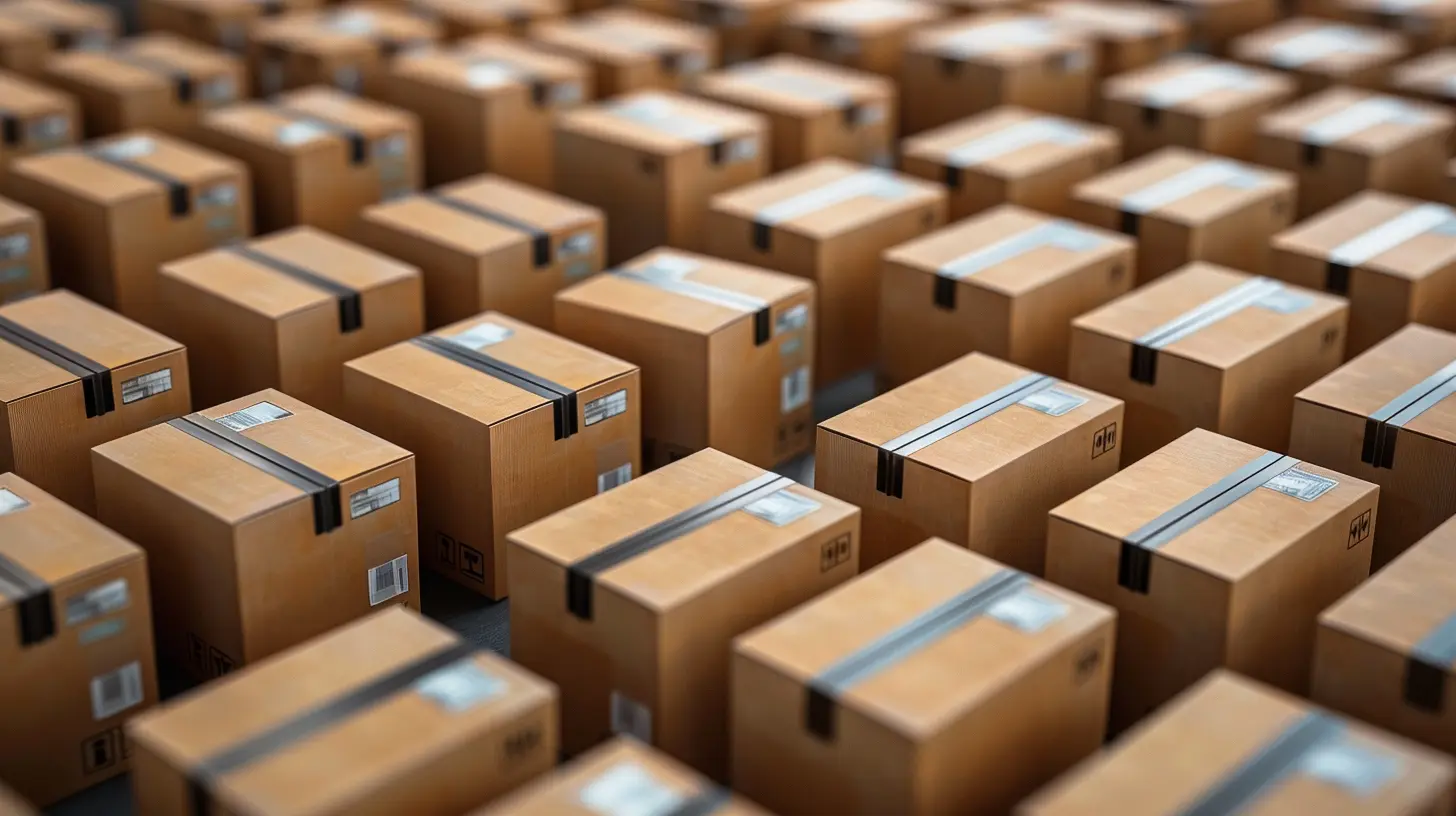How Data Analytics Can Improve Supply Chain Demand Planning
1 August 2025
Let’s be real—supply chain demand planning is one of those things that can make or break a business. It's like the GPS of your operations. If it's off by even a little, your entire route gets messed up. You either overstock and waste money or understock and lose sales. Ouch!
So, what’s the secret sauce to getting it right? Two words: Data Analytics.
In today’s digital-first world, data is more than just numbers—it tells stories, highlights trends, and, when used right, predicts the future. Sounds like magic? It’s not. It’s just smart business.
In this post, we'll dive into how data analytics can completely reinvent your approach to supply chain demand planning. You’ll see how businesses are cutting costs, staying ahead of customer demands, and building resilient, agile supply chains—all thanks to data. Let’s break it down.
What Is Supply Chain Demand Planning, Really?
Before we get into the juicy analytics stuff, let’s make sure we’re on the same page. Supply chain demand planning is the process businesses use to forecast customer demand. The goal? Meet demand without overproducing or underproducing.It’s a balancing act. Too much inventory can drain your wallet. Too little? You risk missed sales and unhappy customers. That’s why nailing this process is crucial.
And this is where data analytics enters the chat.
The Shift From Guesswork to Data-Driven Decisions
In the past, demand planning often involved a lot of gut feeling. Maybe you'd rely on historical sales data and a bit of market intuition. While that might’ve worked to some extent, it’s not exactly reliable—especially in today’s fast-paced markets.Enter data analytics.
Now, businesses can tap into real-time insights, study historical trends, factor in seasonality, monitor competitor behavior, and even account for global events (like, oh I don’t know... a surprise pandemic). The point is, you're no longer planning in the dark.
How Data Analytics Levels Up Demand Planning
Let’s roll up our sleeves and get into the practical ways data analytics transforms your supply chain demand planning.1. Accurate Forecasting
This one's a game changer.Using predictive analytics, businesses can forecast with a higher degree of accuracy. How? By analyzing not just past sales, but also external factors like:
- Market trends
- Weather patterns
- Social media sentiment (yep, that’s a thing!)
- Economic indicators
- Competitor pricing
Imagine knowing that demand for umbrellas is about to skyrocket—not just because it’s rainy season, but because weather forecasts predict double the usual rainfall and TikTok is suddenly obsessed with “aesthetic rain walks.” That’s forecasting on steroids.
2. Real-Time Decision Making
With the right analytics tools, businesses no longer have to wait a month to get sales reports. You can see what's happening right now.Let’s say there’s a sudden spike in sales for one of your products. Real-time analytics alerts your team instantly. You can then ramp up production or shift inventory before running out. That’s agility at play—and in today’s market, agility wins.
3. Demand Segmentation
Not all customers are created equal.Data analytics can help you break down demand by geography, customer type, seasonality, and more. For example, maybe Product A sells really well in the Midwest during winter but barely moves in Florida—makes sense, right?
With this insight, you can fine-tune your inventory strategies, reduce waste, and keep the right products in the right places at the right times.
4. Inventory Optimization
Holding too much inventory is expensive. It eats into your profit margins and ties up working capital. But running out of stock? That hurts even more.Data analytics helps you find your sweet spot. By analyzing past sales, lead times, and supplier performance, you can set reorder points that truly reflect current realities—not outdated schedules.
It’s like having cruise control for your inventory management.
5. Identifying Anomalies and Risks
Things don’t always go as planned. A supplier misses a deadline. A port strike delays your shipment. A sudden trend creates a demand spike.Analytics tools can detect these anomalies early. They flag irregular patterns and even suggest mitigation strategies. Instead of scrambling for a fix, you're proactively managing the risk.
6. Collaborative Planning Across the Supply Chain
Supply chains aren’t just about one company. They’re ecosystems—suppliers, logistics partners, distributors, retailers, and customers.When everyone shares data and uses analytics, the entire chain becomes more resilient and responsive. This is called collaborative planning, forecasting, and replenishment (CPFR), and it's a big deal in modern supply chains.
Think of it as a group project where everyone actually pulls their weight—because the shared data keeps everyone accountable.
7. Enhanced Customer Satisfaction
Here’s the bottom line: when you use data to plan better, you meet customer expectations more consistently.They're not waiting weeks for an item to be back in stock. They're not dealing with cancellations. Instead, they get what they want, when they want it.
And happy customers? They come back. They leave good reviews. They become brand advocates. It’s a win-win.
What Kind of Data Are We Talking About?
Great question. For data analytics to work its magic, you need the right inputs. Here are just a few key types:- Historical sales data: The foundation of most demand planning models.
- Point of sale (POS) data: What’s selling and where.
- Market trends: Trends in online searches, sentiment, and industry reports.
- External data sources: Weather forecasts, economic conditions, political news.
- Supplier performance data: Lead times, reliability, pricing.
- Customer behavior: Website clicks, abandoned carts, purchase frequency.
The more dimensions of data you have, the more accurate your insights become.
Key Analytics Tools You Should Know About
You don’t need a Ph.D. in data science to get started. These tools make life a whole lot easier:- Power BI or Tableau: Great for visualizing complex data quickly.
- Advanced Excel: Still super useful for modeling and forecasting.
- SAP IBP or Oracle SCM Cloud: Enterprise-level tools for integrating analytics into supply chain planning.
- Machine learning platforms: For predictive insights and anomaly detection.
- Google Analytics + CRM data: Helps link online behavior to purchasing trends.
Pick the tools that match your scale and needs. It’s not about having the fanciest dashboard; it’s about actionable insights.
Challenges in Using Data Analytics (And How to Tackle Them)
Let’s not pretend like it's all smooth sailing. Integrating data analytics into demand planning does come with hurdles.Data Silos
Often, different departments hoard their data. Sales, marketing, finance—they all have pieces of the puzzle, but if they're not talking, you're working with half the picture.Fix: Invest in tools or platforms that centralize and integrate information flow.
Data Quality
Garbage in, garbage out. If your data's messy, outdated, or incorrect, your forecasts will be too.Fix: Clean and audit data regularly. Create standard protocols for data entry and updates.
Change Resistance
People get comfortable with the old way of doing things. Bringing in new systems, especially ones involving analytics, can meet resistance.Fix: Educate your team. Show small wins. Involve them early in the process.
High Costs of Implementation
Advanced analytics platforms and training come with a cost.Fix: Start small. Prove ROI with pilot programs before full-blown implementation.
Real-World Wins: Brands Nailing It with Data Analytics
- Amazon: Uses predictive analytics to restock before you even realize you’re running low.- Walmart: Mines mountains of sales data to make real-time inventory decisions.
- Zara: Combines POS data with fashion trend analysis to quickly adapt collections.
If they can do it, so can you. You don’t have to be a billion-dollar company—you just need a data-driven mindset and the right tools.
Final Thoughts
So, how can data analytics improve supply chain demand planning? In just about every way.Forecasts become sharper. Inventory gets leaner. Risks are managed proactively. Customers are happier. And your business? It runs smoother, leaner, and smarter.
In a world where change is the only constant, data analytics isn’t just a nice-to-have—it’s a need-to-have.
Start small. Focus on one area. Prove value. Then expand. The future of supply chain planning is here, and it’s wearing a badge that says “Powered by Data.
all images in this post were generated using AI tools
Category:
Supply Chain ManagementAuthor:

Remington McClain
Discussion
rate this article
1 comments
Vanessa McKinley
Great insights! Leveraging data analytics can significantly enhance accuracy and efficiency in demand planning.
August 27, 2025 at 3:29 AM

Remington McClain
Thank you! I'm glad you found the insights valuable. Data analytics truly is a game-changer for demand planning!


